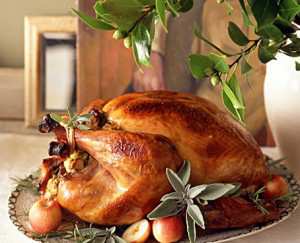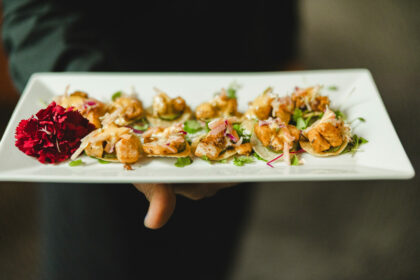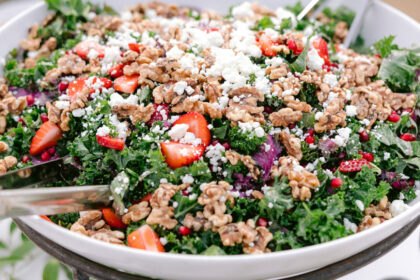 Being in the catering industry, we are frequently asked our cooking and kitchen advice. Every year at this time, questions turn to how to solve certain common mishaps in the Thanksgiving kitchen as folks who normally do not cook this extensively throughout the year, endeavor to do so with gusto one solitary day when so much is resting on the success of the meal. Catering Connection Owner/Founder Ursula O’Neill and her lead Chef Mark teamed up to provide the top 5 questions (or dilemmas) they are asked about each year. Here are their suggestions:
Being in the catering industry, we are frequently asked our cooking and kitchen advice. Every year at this time, questions turn to how to solve certain common mishaps in the Thanksgiving kitchen as folks who normally do not cook this extensively throughout the year, endeavor to do so with gusto one solitary day when so much is resting on the success of the meal. Catering Connection Owner/Founder Ursula O’Neill and her lead Chef Mark teamed up to provide the top 5 questions (or dilemmas) they are asked about each year. Here are their suggestions:
1. Lumpy Gravy: is most likely attributed to undissolved starch and this is easy to get rid of. Strain the gravy through a fine sieve. If the gravy is too thin, add extra starch. If the gravy is thick enough to use, go ahead and use it.
2. Unevenly Cooked Turkey: Breasts cook faster than legs and thighs. Note: you should cook the bird until it registers 160-165 degrees F for breasts and 170-175 degrees F for thighs and legs on an instant read thermometer. For dry parts of the turkey, the solution is simple: use gravy generously. For dark meat that is undercooked, simply carve off legs and thighs, put them in a pan and return to the oven to continue roasting until they reach 170-175 degrees F.
3. Still Frozen Turkey: It takes 5 hours per one pound of turkey to defrost it. To speed up the process safely, defrost the turkey in water. Simply put in the kitchen sink and cover with cold tap water. Every half hour, drain the water and refill the sink. It will thaw at a rate of 30 minutes per pound. If this will change your meal time because you discovered your frozen bird the morning of Thanksgiving, give guests a call to re-set a new meal time or consider re-staging your meal to be in several courses, ending with the turkey when it is fully cooked as the “last” course.
4. Timing. This is one of the biggest dilemmas we hear about. Most private homes only have one oven . What to do? Have a strategy. Sit down and review all your recipes and come up with a plan that includes a timeline, starting with prep the day(s) before Thanksgiving Day. Anything that can be “heated up” the day of from preparation the day(s) before is ideal. And don’t forget, serving hot gravy is a favorite “trick” to make lukewarm potatoes, stuffing and turkey taste warm and wonderful.
5. Accidental Salt Overdose: Contrary to the old myth of sticking a peeled potato in to absorb the salt of a dish that has too much of it in it, this old method has never appeared to really work. Got a bit overly-enthusiastic with the salt in one of your dishes? Depending on how much you used, you may not be able to salvage the dish and it may just be simpler to start over. If , however, you only mildly over-salted, sometimes you can add an acidic ingredient like lemon juice, vinegar or wine. It won’t fix the entire overly-salted taste, but it will “trick” tastebuds into being distracted with a different flavor. To actually “fix” an oversalted item, you could double the recipe and add more of the other ingredients (except the salt) and hope that works.
Happy Thanksgiving and Bon Appetit from our kitchen to yours!









